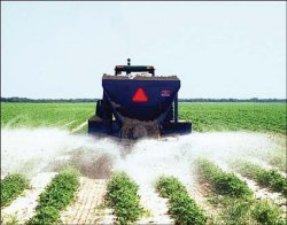
Section Branding
Header Content
Coal Waste for Farmers
Primary Content

Researchers in Georgia are looking at using waste from coal-fired power plants in agriculture. Many power plants use so-called scrubbers to remove acid rain causing emissions. Last year these scrubbers produced 20-million tons of a by-product called, synthetic or FGD gypsum.
Some ended up in landfills. Some was used to make drywall, and 280-tons was spread on farmers fields across the country to increase yields. USDA Scientist, Dwight Fisher is conducting a study at the J. Phil Campbell Sr. Natural Resource Conservation Center in Watkinsville to see how safe and effective the material is.
"It increases infiltration so rainfall goes in rather than runs off. So, you would actually at least in theory you would have less irrigation water applied."
Fisher says they are also looking at runoff and soil samples to check for levels of toxic metals. The study is a partnership between the EPA, USDA and power companies.
Tags: USDA, EPA, coal plant waste, coal waste and agriculture, synthetic gypsum
